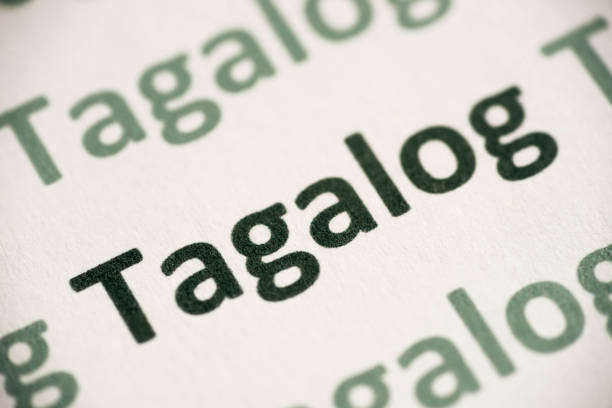Tagalog has replaceable vowel and consonant sounds that can change the meaning of words.
Proper pronunciation is crucial for effective communication in Tagalog and conveying the intended meaning of words.
Learning the correct pronunciation of replaceable sounds is essential for fluency in Tagalog. Respecting copyright laws and using legitimate learning materials ensures accuracy and quality in learning Tagalog pronunciation.
Vowel and Consonant Sounds in Tagalog
Understanding the replaceable vowel and consonant sounds in Tagalog is essential for mastering the pronunciation of the language.
Tagalog encompasses five vowel sounds (/a/, /e/, /i/, /o/, /u/) that can be interchanged in certain words, impacting their meanings. Similarly, certain consonant sounds can be replaced, further altering the meanings of words.
Proper pronunciation is pivotal in effectively communicating in Tagalog, as it ensures the accurate conveyance of intended meanings. Learning to enunciate replaceable sounds fluently is fundamental for linguistic proficiency. Regular practice in pronunciation can substantially enhance language skills.
It’s important to utilize legitimate resources for learning, such as online courses, language exchange programs, and pronunciation apps, to ensure accuracy and quality.
Embracing the intricacies of Tagalog pronunciation is a rewarding journey towards belonging within the language community.
Impact of Replaceable Sounds on Meaning
The impact of replaceable vowel and consonant sounds on word meanings in Tagalog is significant, influencing the nuances and interpretations of the language.
In Tagalog, the replacement of vowel sounds can entirely change the meaning of words. For instance, the word ‘bata’ (child) becomes ‘boto’ (vote) with a change in the vowel sound.
Similarly, the replacement of consonant sounds can also alter the meaning, such as ‘takot’ (fear) becoming ‘tukot’ (splinter).
Understanding these nuances is essential for accurate communication. By mastering the pronunciation of replaceable sounds, learners can convey their intended messages effectively and gain a deeper understanding of the language.
Embracing these intricacies fosters a sense of belonging and connection within the Tagalog-speaking community.
Importance of Tagalog Pronunciation
Mastering the correct pronunciation of replaceable sounds in Tagalog is fundamental for effective communication and language fluency. Pronunciation plays a crucial role in conveying the intended meaning of words. Proper pronunciation ensures that your message is clearly understood, preventing misunderstandings.
Learning the correct pronunciation of replaceable sounds is essential for fluency in Tagalog. It’s important to practice pronunciation regularly to improve your language skills. Embracing the challenge of mastering pronunciation will greatly enhance your ability to connect with others and feel a sense of belonging within the Tagalog-speaking community.
Copyright and Learning Materials in Tagalog
Respecting copyright laws and acknowledging the intellectual property of authors and creators is crucial when using Tagalog learning materials.
Copyright protection ensures that the hard work and creativity of content creators are respected. Unauthorized distribution or reproduction of copyrighted materials is illegal and undermines the efforts of those who produce valuable learning resources.
Always give proper credit to the original authors when using their work, as it not only honors their contribution but also maintains the integrity of the learning materials. Learning from legitimate sources ensures the accuracy and quality of the content, providing a solid foundation for language acquisition.
Resources for Learning Tagalog Pronunciation
When seeking to improve Tagalog pronunciation, individuals can explore a variety of resources to enhance their language skills. Utilizing a combination of these resources can provide a well-rounded approach to mastering Tagalog pronunciation. Here are some resources to consider:
| Resources | Description |
|---|---|
| Online courses and tutorials | Structured lessons on pronunciation available on various platforms. |
| Language exchange programs | Practice with native Tagalog speakers to improve pronunciation skills. |
| Pronunciation apps and software | Assistance in mastering pronunciation through interactive tools. |
Frequently Asked Questions
What Are Some Common Mistakes Non-Native Speakers Make When Pronouncing Tagalog Vowel Sounds?
Common mistakes non-native speakers make when pronouncing Tagalog vowel sounds include incorrect placement and duration. Proper pronunciation is essential for effective communication and understanding. Regular practice and guidance from legitimate sources can enhance language proficiency.
Are There Any Regional Variations in Tagalog Pronunciation That Learners Should Be Aware Of?
Yes, regional variations in Tagalog pronunciation exist. Different regions may have distinct accents and intonations. Learners should be aware of these variations to communicate effectively with diverse Tagalog speakers.
How Can One Overcome Challenges in Pronouncing Tagalog Sounds That Do Not Exist in Their Native Language?
Overcoming challenges in pronouncing Tagalog sounds not present in one’s native language involves patient practice and exposure to native speakers. Using structured lessons, language exchange programs, and pronunciation tools can enhance language skills.
Are There Any Specific Tongue or Mouth Exercises That Can Help Improve Tagalog Pronunciation?
Specific tongue and mouth exercises, such as practicing vowel and consonant sounds, tongue twisters, and mimicking native speakers, can improve Tagalog pronunciation. Consistent practice and patience are key to enhancing language skills.
What Are Some Effective Techniques for Self-Assessment and Improvement of Tagalog Pronunciation Skills?
Effective techniques for self-assessment and improvement of Tagalog pronunciation skills include recording and analyzing speech, seeking feedback from native speakers, practicing minimal pairs, and using pronunciation apps. Consistent practice and patience are key to progress.
Conclusion
In conclusion, understanding the intricacies of Tagalog pronunciation is essential for language fluency and effective communication. Mastering replaceable vowel and consonant sounds is crucial for altering word meanings and conveying messages accurately.
It is important to respect copyright laws when utilizing learning materials and to seek out legitimate resources for learning Tagalog pronunciation.
With dedication and the right tools, readers can enhance their language skills and gain a deeper understanding of pronunciation in Tagalog.
